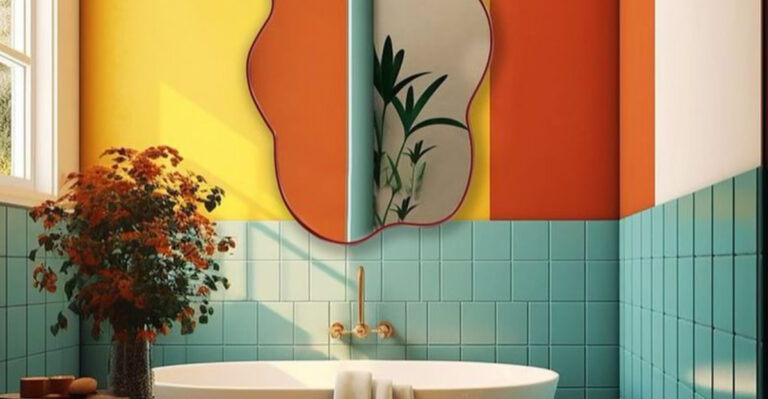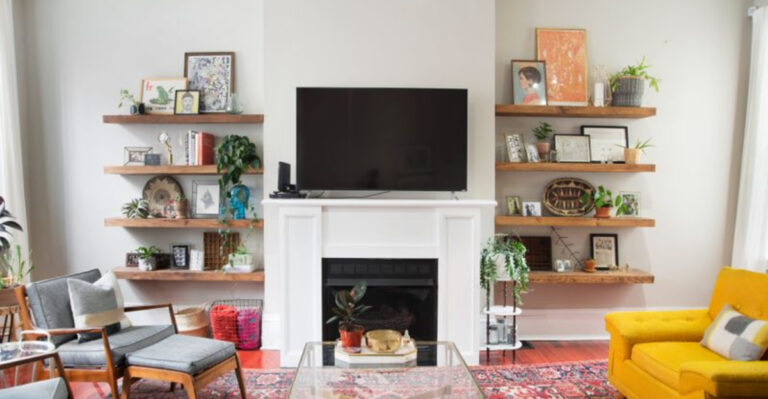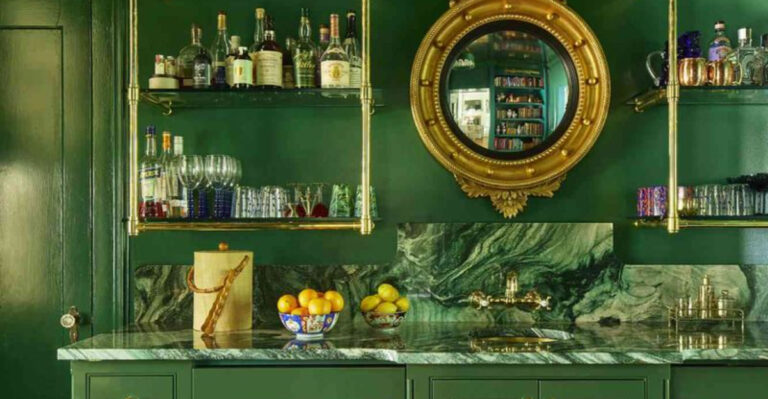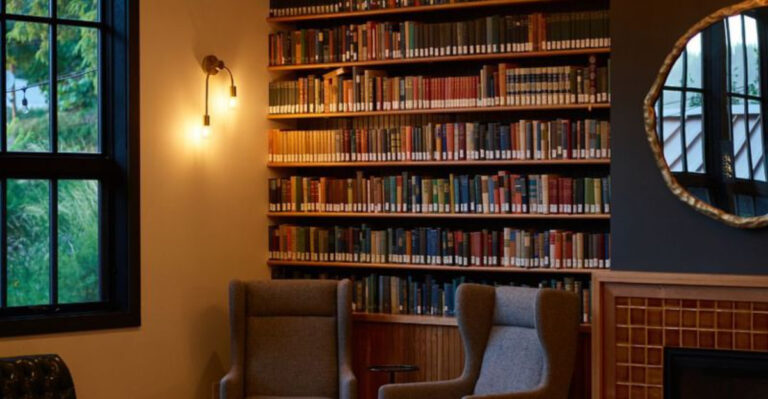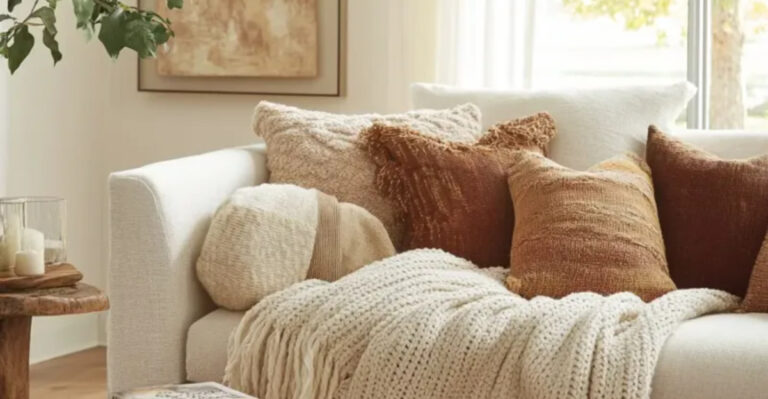Avoid These 19 Organizing Errors To Keep Your Home Tidy
Keeping a home organized isn’t just about making it look pretty, it’s about creating a space that feels calm and actually works for your life.
I’ve learned the hard way that even with the best intentions, it’s easy to fall into habits that lead straight back to clutter and chaos. Sound familiar? If you’ve ever spent hours organizing only to have everything fall apart a week later, you’re not alone.
Let’s talk about the most common organizing mistakes we all make and how a few simple changes can help your home finally feel as peaceful and functional as you want it to be.
1. Buying Storage Containers First
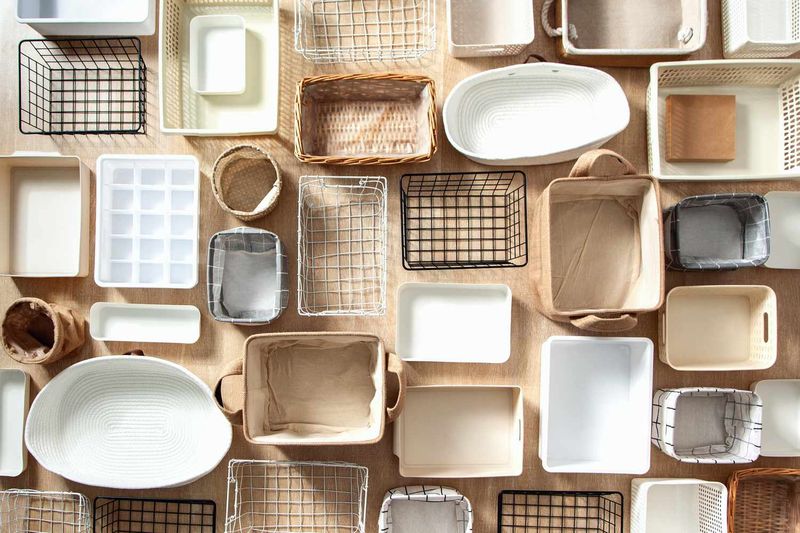
Rushing to the store for bins and baskets before you’ve sorted through your items is like buying groceries without checking what’s in your fridge. You’ll end up with containers that don’t fit your stuff or your space.
First declutter, then measure, then shop. This sequence ensures you buy exactly what you need. Sometimes the perfect storage solution is already hiding in your home, waiting to be repurposed!
2. Ignoring Vertical Space
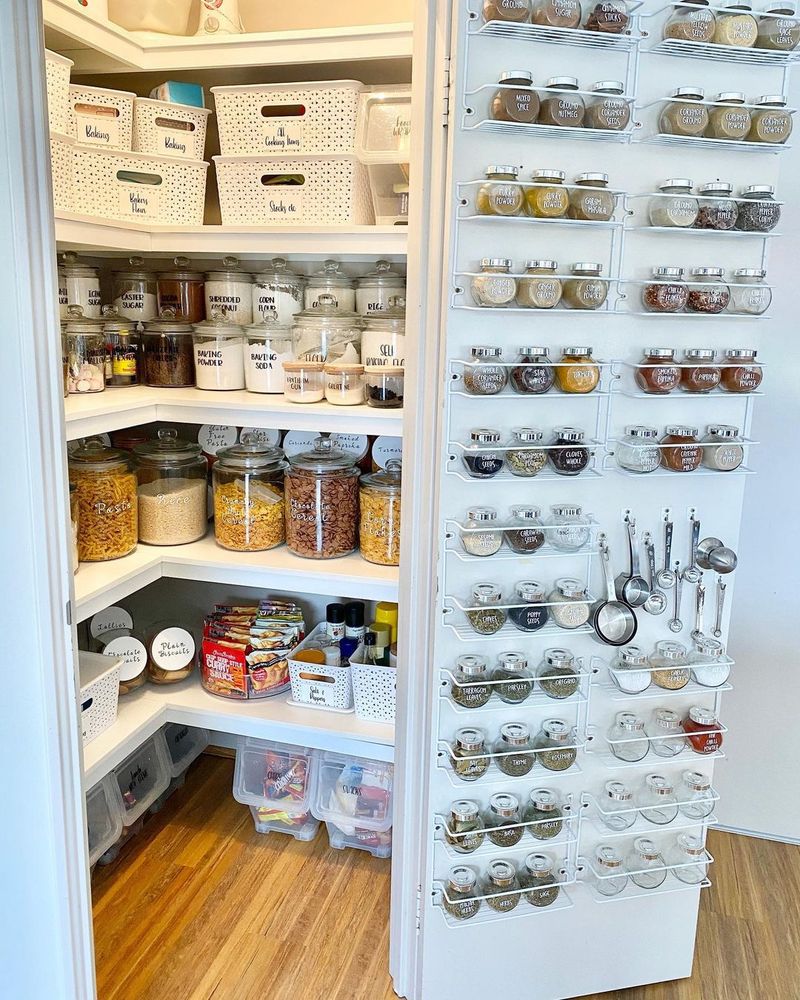
Looking up might solve your storage woes! Many homeowners focus solely on floor-level storage while walls and ceiling areas remain tragically empty.
Wall shelves, hanging racks, and over-door organizers can double your storage capacity. Vertical storage keeps items visible yet out of the way.
Your floors will thank you for the breathing room, and you’ll appreciate how much easier it is to vacuum without obstacles.
3. Complicated Storage Systems
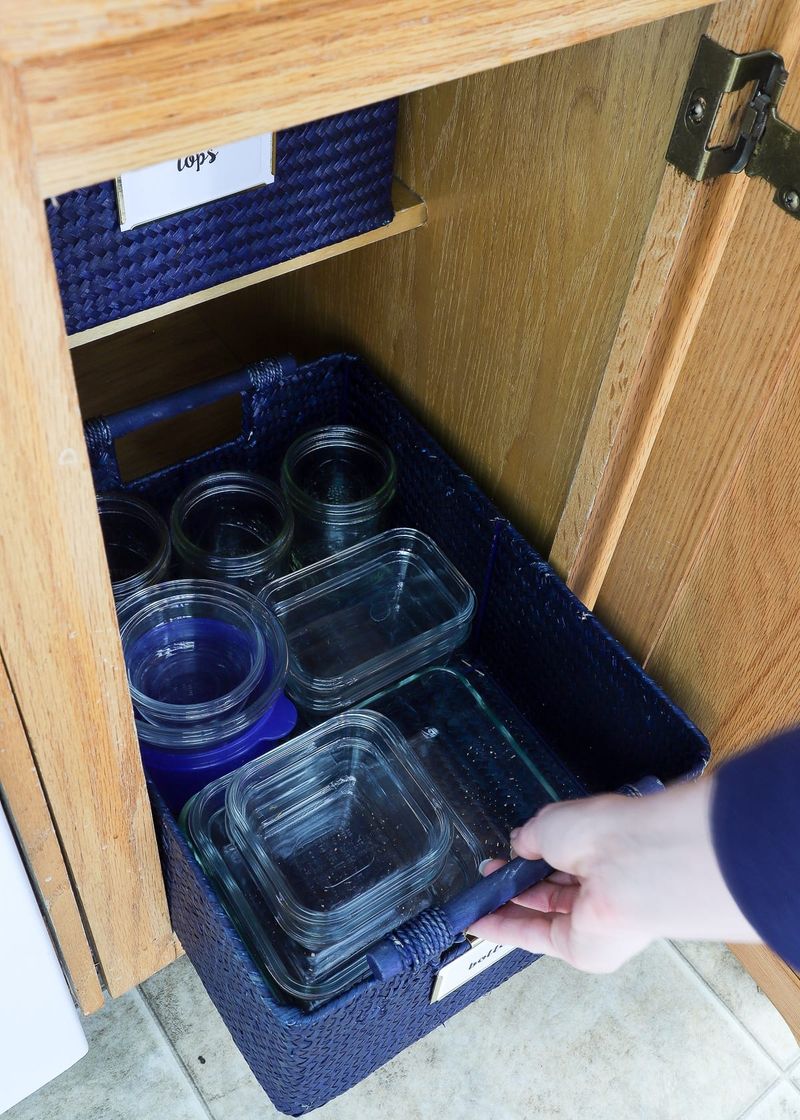
If your organization method requires an instruction manual, you’ve gone too far! Overly complex systems with multiple steps rarely stick because they fight against human nature.
Simple solutions win every time. When storing something takes three steps instead of one, you’re less likely to maintain the system. The best organization happens when the path of least resistance is also the tidy option.
4. Unrealistic Pinterest Standards
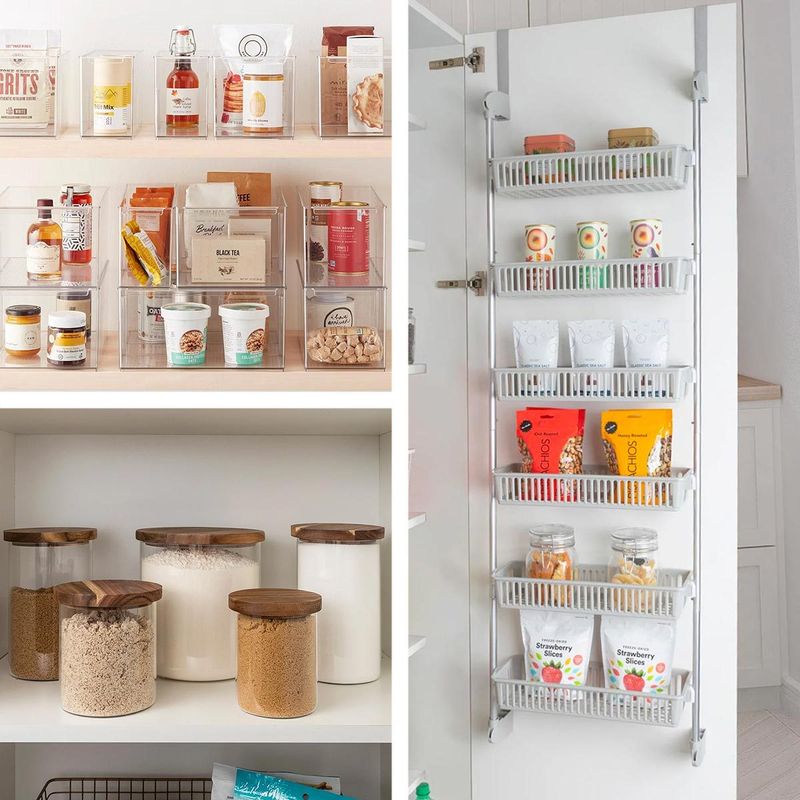
Those color-coordinated pantries with matching containers and perfect labels? They’re gorgeous but often impractical for real life.
Setting unrealistic standards based on highly styled photos leads to disappointment. Focus on function over perfection.
A system that works consistently beats a beautiful one that falls apart after two days. Remember that most Pinterest photos don’t show the maintenance required or the reality of daily use.
5. Keeping Too Many Containers
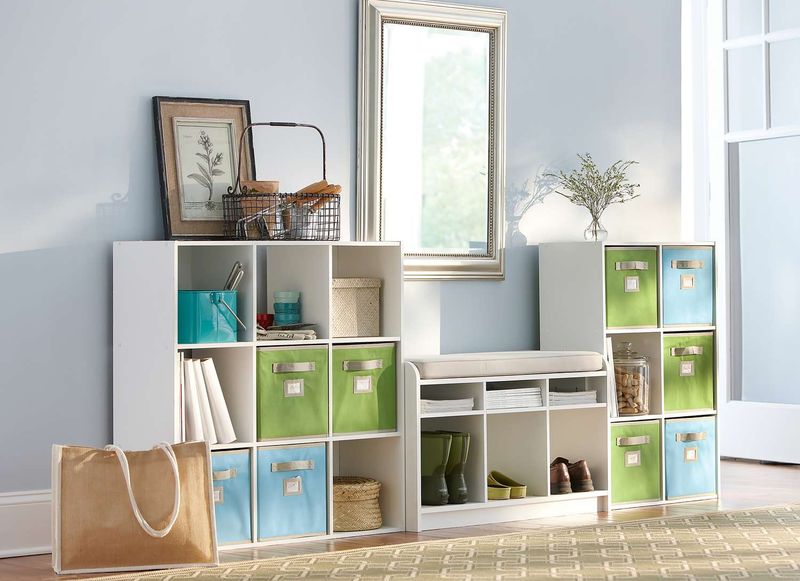
Hoarding empty containers “just in case” creates its own clutter problem. Those yogurt tubs and delivery boxes quickly multiply, taking over valuable storage space while waiting for a purpose that may never come.
Set a container limit. Keep a small selection of useful sizes and recycle the rest. Quality matters more than quantity here – a few versatile containers will serve you better than dozens of mismatched ones.
6. Mixing Unrelated Items
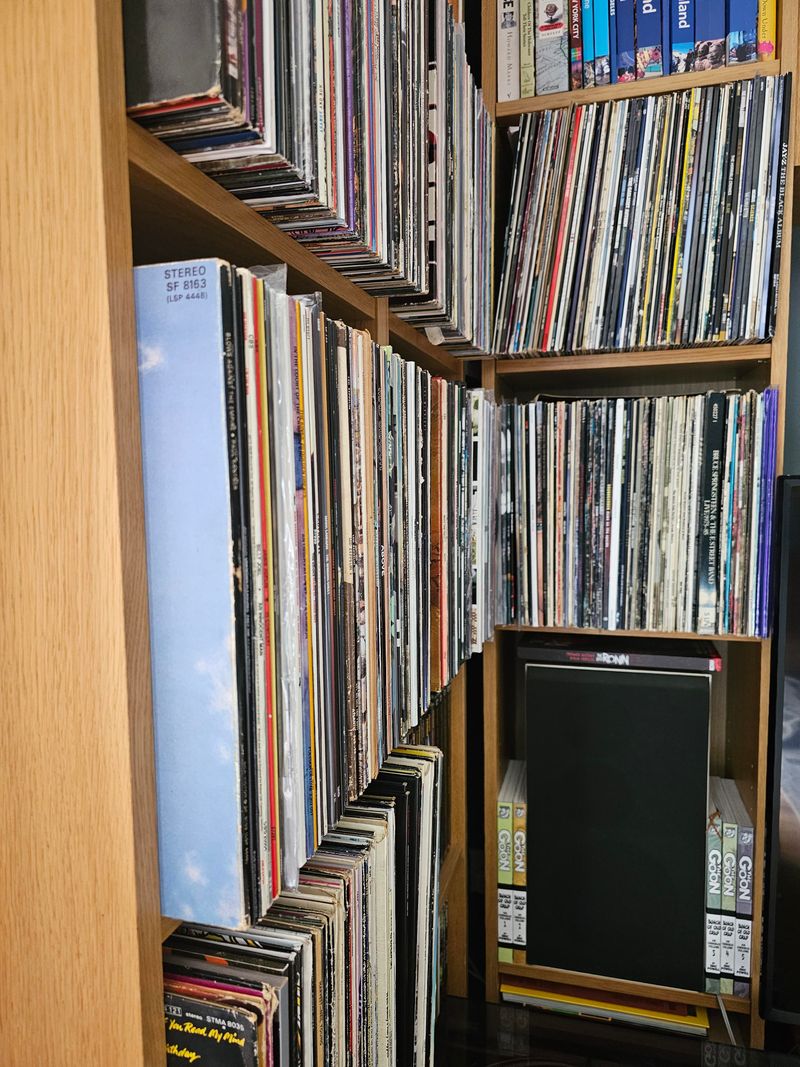
Finding batteries with your baking supplies or office supplies with bathroom products creates confusion and wastes time.
When categories get mixed, your brain can’t create a reliable mental map of where things belong. Group similar items together based on function or use.
This simple principle makes finding things intuitive. Your future self will thank you when you can immediately go to the right spot instead of hunting through random collections.
7. Skipping Labels
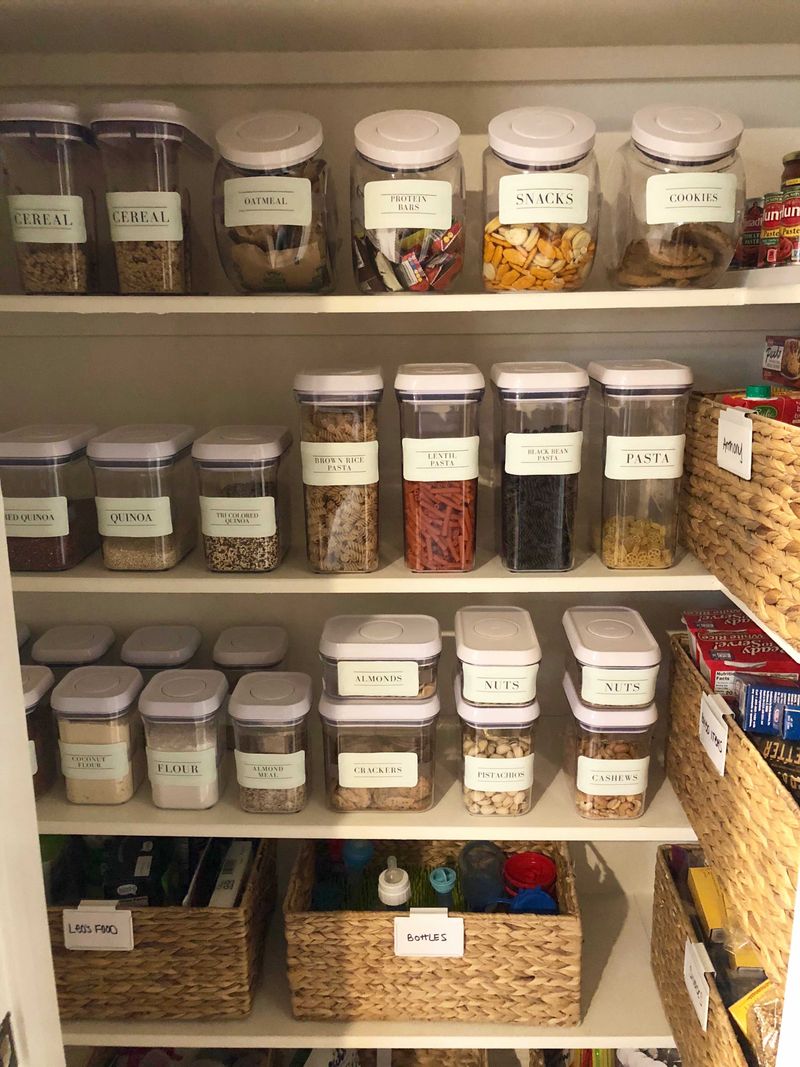
Without labels, even the most organized storage system slowly unravels. Family members put things back in random places, and even you might forget your own system after a few weeks.
Labels serve as constant reminders and instructions. They’re especially crucial for shared spaces where multiple people need to maintain the system.
Even simple handwritten labels work wonders for maintaining order long-term.
8. Overcrowded Spaces

Jamming shelves and drawers to maximum capacity is a recipe for frustration. When removing one item causes an avalanche, you’ve crossed the line from organized to overcrowded.
Leave breathing room in every storage area. Aim for shelves and drawers to be about 80% full, not 100%.
This extra space makes it easier to see what you have and return items to their proper places without playing a game of Tetris.
9. One-Size-Fits-All Approach
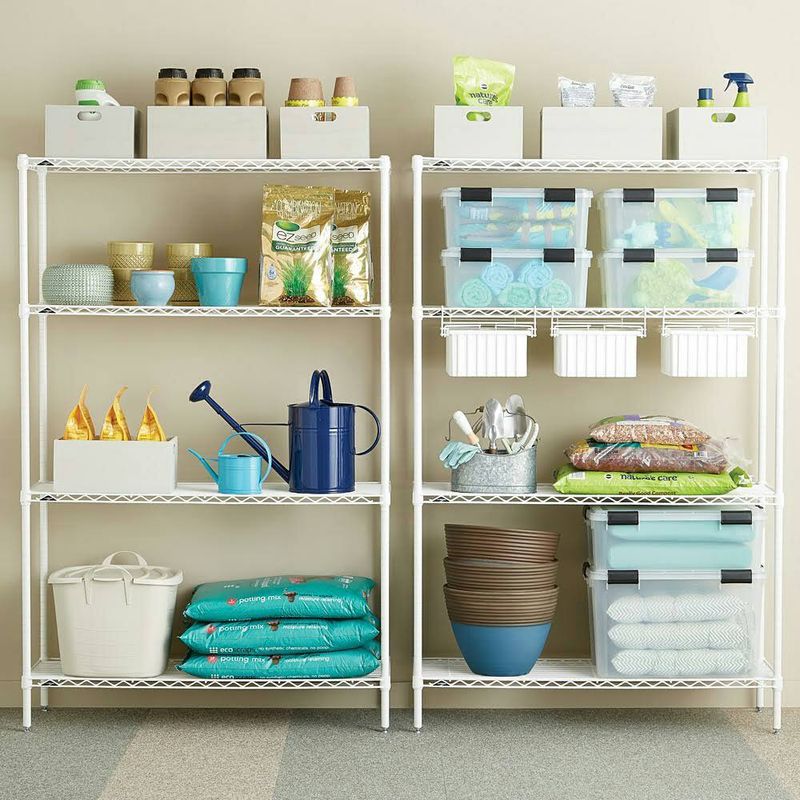
Your kitchen organization needs differ wildly from your garage needs, yet many people try to use the same containers and systems throughout their home.
This inflexible approach ignores the unique requirements of each space. Customize solutions for each area.
What works brilliantly for your bathroom might fail completely in your home office. Consider the specific items, the available space, and how you use things in each room.
10. Postponing Decisions

Those “I’ll deal with it later” piles are decision avoidance in physical form. Each item represents a choice you weren’t ready to make, and collectively they become clutter mountains.
Make decisions in the moment whenever possible. Having a maybe/later box is fine, but schedule regular times to review it.
Without this discipline, postponed decisions become permanent clutter with temporary addresses.
11. Neglecting Regular Maintenance
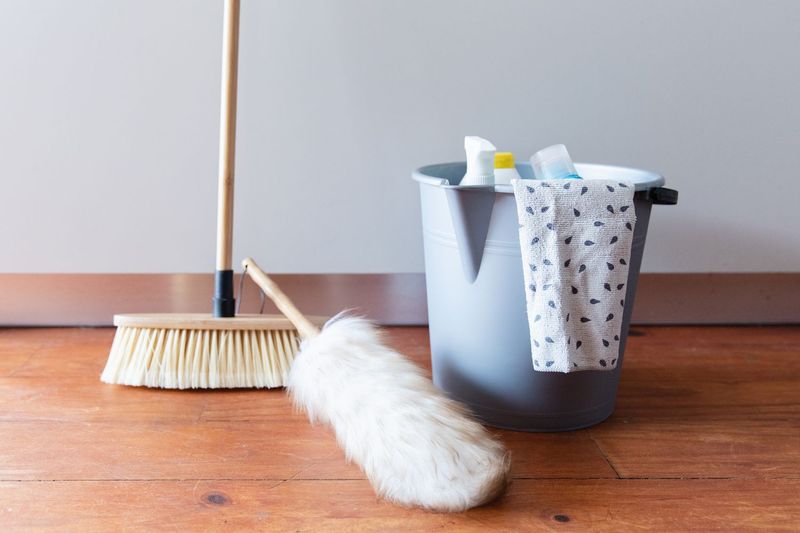
Setting up an organizing system isn’t a one-and-done task—it requires ongoing attention. Many people create beautiful systems that gradually deteriorate because they skip the maintenance part.
Schedule regular reset sessions. Even 15 minutes weekly can prevent organizational backsliding. Think of it like brushing your teeth—a small, consistent effort prevents bigger problems down the road.
12. Hiding Without Organizing
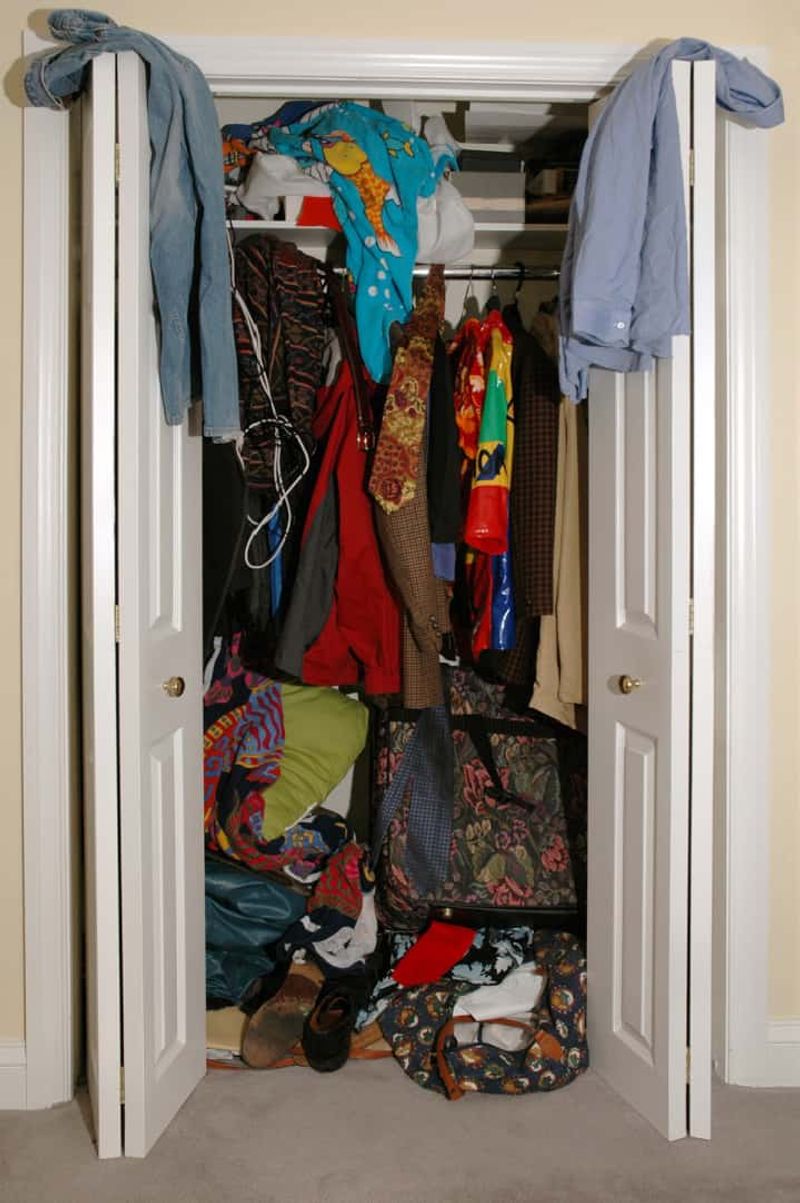
Shoving items into drawers or closets might make rooms look cleaner temporarily, but it’s not organizing—it’s just relocating the mess. This common shortcut creates hidden chaos behind closed doors.
True organization means items have designated homes, not just hiding places. When everything has a logical place to return to, you’ll spend less time searching and more time enjoying your space.
13. Forgetting To Measure
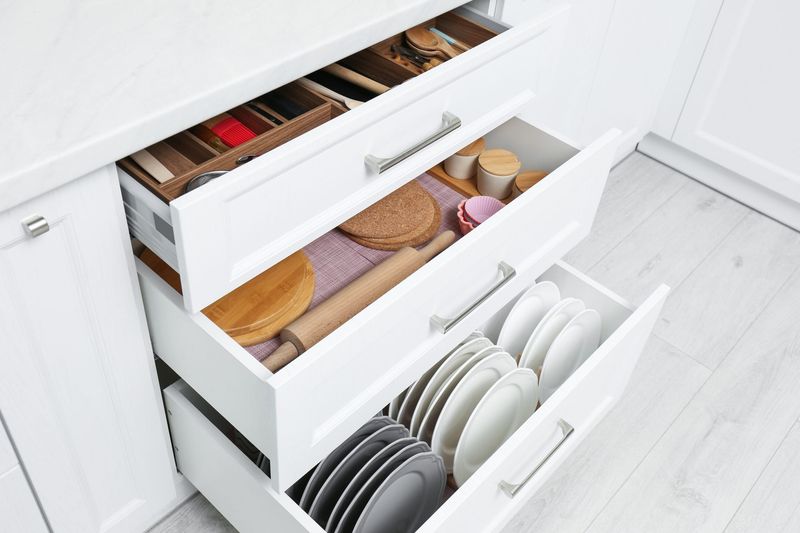
Eyeballing dimensions instead of measuring precisely leads to storage solutions that don’t quite fit. Nothing’s more frustrating than bringing home the perfect shelf only to discover it’s half an inch too wide for your space.
Keep a tape measure handy when organizing. Measure the space AND the items going into it. Those few seconds spent measuring can save hours of frustration and prevent wasted purchases.
14. Keeping Too Many Duplicates
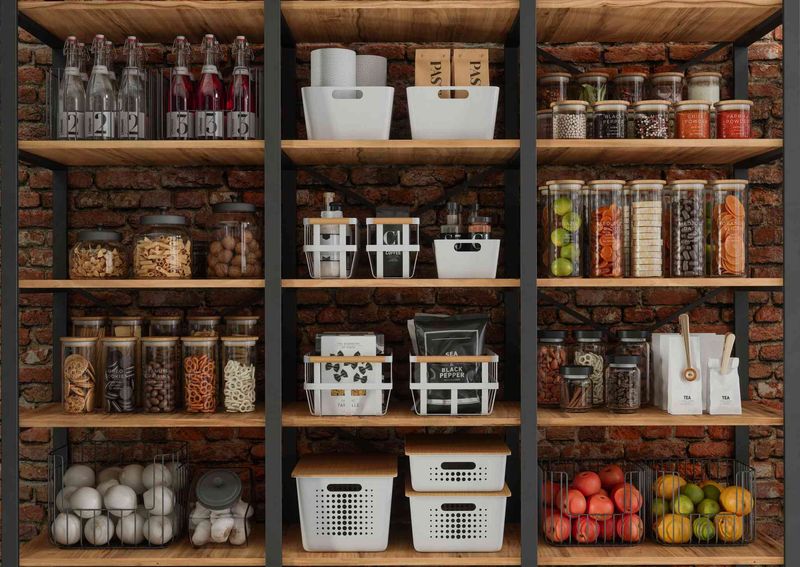
How many spatulas does one kitchen really need? Keeping multiples of everyday items creates unnecessary clutter and makes organization more difficult than it needs to be.
Limit duplicates to items you genuinely use simultaneously. One backup of essential items makes sense, but six rarely does. Quality often trumps quantity—one excellent can opener works better than three mediocre ones.
15. Inconsistent Household Rules
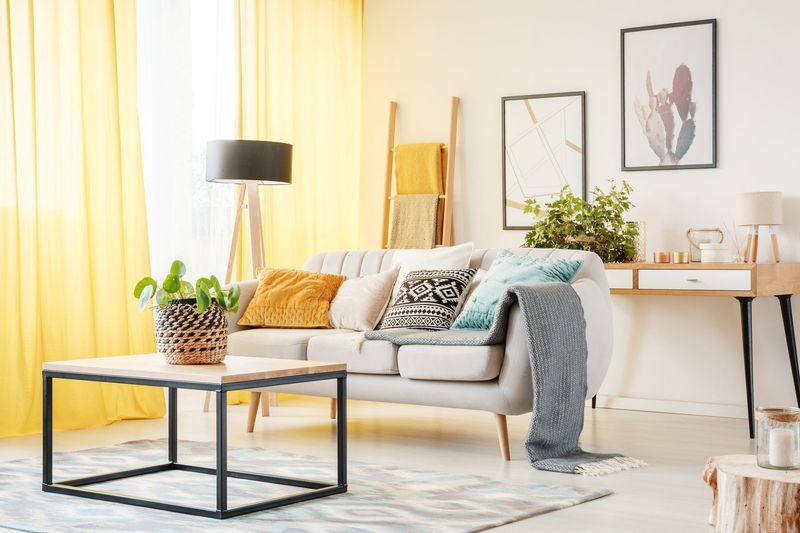
When family members follow different organizing guidelines, chaos inevitably follows. If Mom alphabetizes the spices but Dad arranges them by color, the system breaks down quickly.
Create simple, consistent rules everyone can follow. Get buy-in from all household members when establishing systems.
The best organization method isn’t necessarily the most efficient one—it’s the one everyone will actually use.
16. Organizing Without Decluttering First
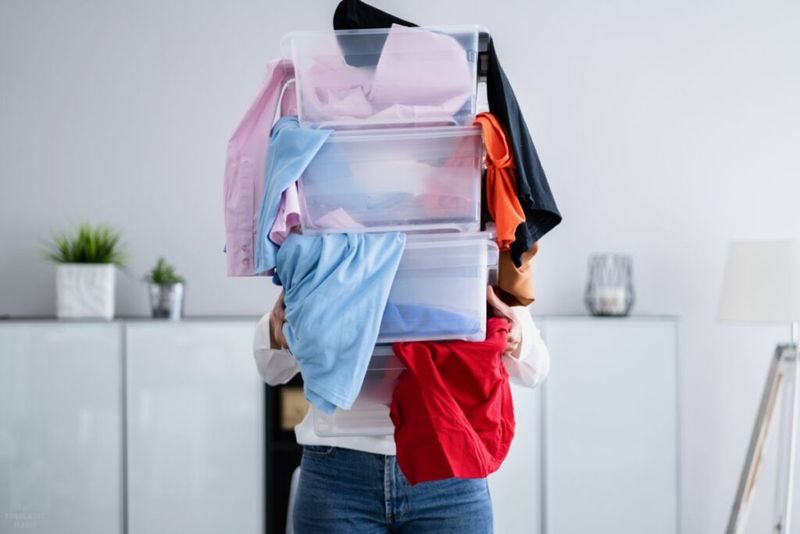
Trying to organize excess stuff is like trying to diet while continuously eating—the math just doesn’t work out! Many people buy organizers for items they don’t even need to keep.
Decluttering must precede organizing. Be ruthless about what deserves to occupy your valuable space. Remember that organizing unnecessary items wastes both your time and your space.
17. Ignoring Door Swings And Traffic Flow
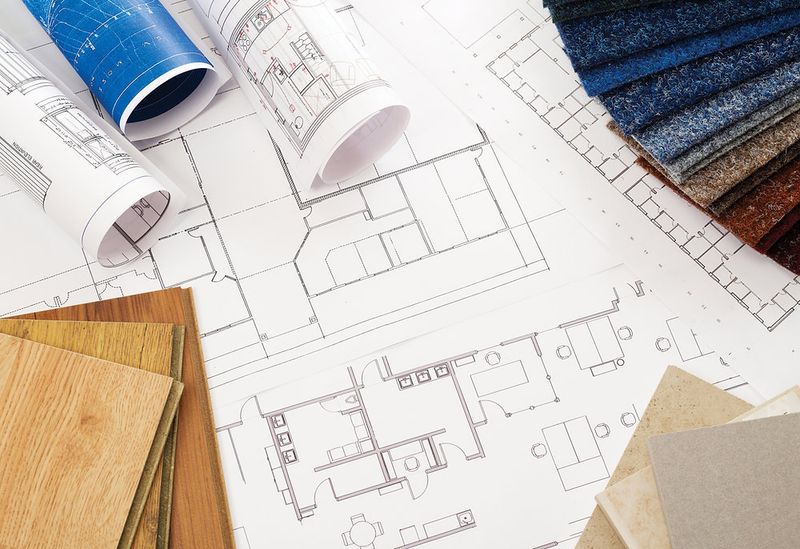
Placing storage units without considering how doors open or people move through spaces creates daily frustration. That perfectly positioned bookshelf isn’t so perfect if it blocks a door from opening fully.
Map out movement patterns before finalizing placement. Consider door swings, drawer extensions, and walking paths. Good organization enhances flow rather than impeding it.
18. Using Inconvenient Containers
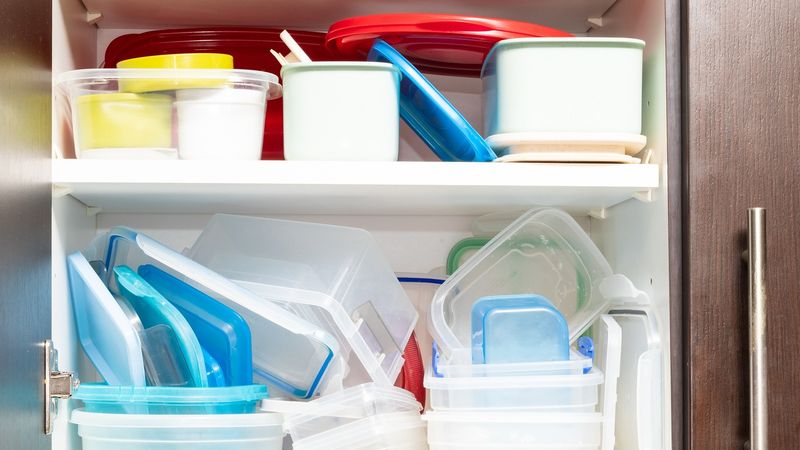
Those beautiful stackable containers with tight-fitting lids might look amazing, but if accessing items requires removing multiple containers and unscrewing complicated lids, you’ll avoid using them.
Convenience trumps aesthetics for everyday items. Open bins work better for frequently accessed things, while secure containers make sense for rarely used or seasonal items. The best container is the one you’ll actually use consistently.
19. Letting Paperwork Pile Up

Paper has a magical ability to multiply when left unattended. Without a system for processing mail and documents, important papers get lost among the junk.
Create a simple paper-handling routine. Deal with mail immediately—recycle, file, or act. For households drowning in paper, try the one-touch rule: decide the fate of each document the first time you handle it.


